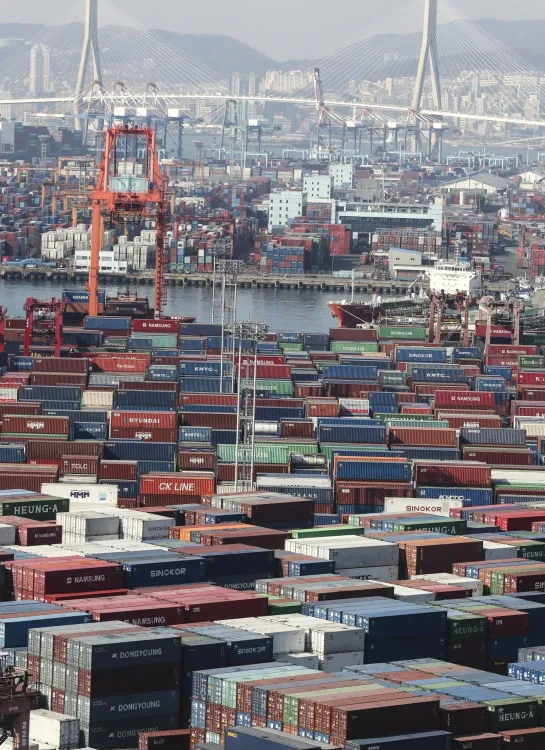How Did South Korea's Exports Increase by 5.9% in July?

Synopsis
Key Takeaways
- South Korea's exports increased by 5.9% in July.
- Semiconductor exports surged 31.6%.
- Trade surplus reached $6.61 billion.
- Automotive industry showed strong performance in the EU and Latin America.
- Cosmetics exports grew by 18.1%.
Seoul, Aug 1 (NationPress) South Korea's exports increased by 5.9 percent compared to the previous year in July, driven by strong global demand for semiconductors, even amid the tariff policies of the U.S. under the Trump administration, according to government data released on Friday.
Outbound shipments reached US$60.8 billion last month, marking the highest value for any July, based on data from the Ministry of Trade, Industry and Energy. Meanwhile, imports rose by 0.7 percent year-on-year to $54.2 billion, resulting in a trade surplus of $6.61 billion, as reported by Yonhap news agency.
Exports of semiconductors surged 31.6 percent year-on-year to $14.71 billion, achieving a record for July, fueled by rising memory chip prices and strong demand for high-value items such as high bandwidth memory (HBM) chips and DDR5.
Seo Ga-ram, a ministry official, indicated that the significant growth in chip exports can be partly linked to heightened demand in anticipation of potential semiconductor tariffs from the U.S. administration. However, the sector is predicted to maintain a strong performance throughout the year due to the expanding artificial intelligence (AI) market.
"Even if the U.S. enforces tariffs on chip imports, the impact on Korea's exports to the U.S. is expected to be minimal, as Korean companies produce high-value semiconductors that U.S. firms are unable to manufacture," he stated.
Automobile shipments rose by 8.8 percent to $5.83 billion, driven by strong sales in the European Union (EU), Latin America, and the Commonwealth of Independent States (CIS), which includes Russia.
Conversely, auto exports to the U.S. saw a decline of 1.7 percent year-on-year, with electric vehicle (EV) shipments plummeting 97.7 percent, attributed to the 25 percent tariffs imposed by the Trump administration on all imported vehicles.
Seo noted that the Korean automotive sector averted a worst-case scenario following a recent trade agreement between Seoul and Washington, which reduced U.S. tariffs on Korean cars from 25 percent to 15 percent, aligning with rates for vehicles from Japan and Europe.
The export of ships soared 107.6 percent year-on-year to $2.24 billion, marking the fifth consecutive month of year-on-year growth, bolstered by strong demand for high-value ships like liquefied natural gas (LNG) tankers.
Exports of agricultural and fisheries products rose by 3.8 percent to $1.08 billion, also a record for July, while cosmetics exports grew by 18.1 percent to $980 million, reflecting the growing global appeal of Korean cuisine and culture, as well as Seoul's initiatives to diversify its export portfolio.
Shipments of electronic devices increased by 19.2 percent to $1.56 billion.
On the downside, petroleum and petrochemical product shipments fell by 6.3 percent and 10.1 percent to $4.21 billion and $3.75 billion, respectively.
Exports of bio-health products declined by 4.9 percent year-on-year to $1.18 billion, while computer exports dropped by 18.5 percent to $950 million, and display shipments fell by 9 percent to $1.57 billion.
Machinery shipments plummeted 17.2 percent to $4.28 billion due to U.S. tariffs, with steel exports contracting by 2.9 percent to $2.72 billion due to sluggish demand and 50 percent U.S. tariffs.
In terms of destination, exports to the U.S. rose by 1.4 percent year-on-year to $10.33 billion, but this marked the first time since the beginning of last year that the U.S. ranked third in terms of imports from South Korea, following China and the Association of Southeast Asian Nations (ASEAN).









